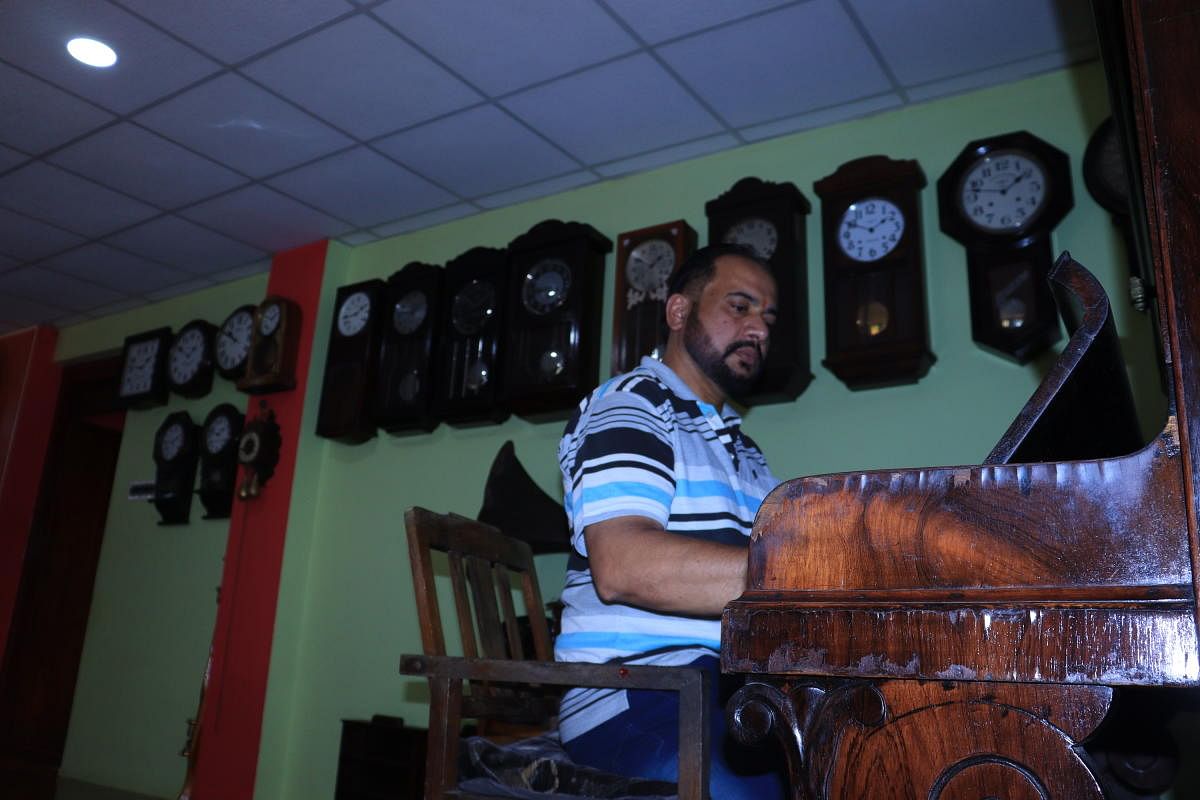

As the years have passed, the world has seen several advancements in technology. Still, many continue to find amusement in collecting antiques in reminiscence of bygone eras.
The toil of a passionate hobbyist, Shashi Bhat, for instance, welcomes people with the pleasant ticking sound of clocks that line the walls.
Shashi, who hails from Bantwal taluk in Dakshina Kannada district, is a farmer and a clock enthusiast. He ardently researches and gathers clocks and watches from different parts of the world. A huge collection of vintage clocks, many over 90 years old, have found a place in his house.
He has collected more than 120 antique timepieces. The collection includes watches from the US, Japan, Germany, the Netherlands and Switzerland. Some clocks are manufactured by India-based companies while others are foreign brands.
Shashi began this journey 15 years ago. “I was inspired to assemble my own collection after seeing a collection of clocks in one of my relative’s houses,” says Shashi.
“Fifteen years back then, Shashi Bhat had payed a visit to my house. He was inquisitive about the clock collection I had in my house. Shashi’s passion of preserving clocks grew and he has collected numerous artefacts since,” says Balasubramanya, a clock enthusiast.
Although the clocks in Shashi’s collection are from various time periods, with some dating back nearly a century, all of them are operational. The collector ensures his collection is maintained in an excellent manner.
Shashi often mends the clocks to keep them in working condition. When an error occurs in any of the timepieces, he takes the assistance of a technical expert with experience in operating old, mechanical clocks.
All the clocks here run on the original, age-old mechanical systems. Some are powered by weights and wound using keys. These pieces are powered by the gravitational pull of heavy weights. Once the clocks are wound up, the weights gradually move downward, until they return to their original position. At this point, the weights need to be pulled back up using the key to wind the clock up again.
Most weight-driven clocks also produce a chime, so they are also known as ‘chiming clocks’. Some clocks in Shashi’s collection need to be rewound every week. Others can be wound once in 14, 21 or 30 days.
One of the most charming sights at Shashi’s clock gallery is a pair clocks — a seven-foot-tall ‘grandfather two weight’ clock and a nearly six-foot-tall ‘grandmother three weight’ clock.
“My father’s passion has inspired me to learn about the history of various clocks and their mechanisms. His hobby has encouraged me to continue preserving ancient antiques,” says Shashi’s son, Shashank Bhat.
Artefacts
In addition to the clocks and wristwatches, the collection also features striking artefacts that are more than a century old. They consist of copper vessels, brass chimney lamps wooden rice-measuring scales from different states and other wooden implements, including ploughs.
Explaining his fascination with these artefacts, Shashi says, “People were able to light up their homes using these lamps.” The traditional Tulunad chimney lamp is the oldest in his collection. There are more than a hundred such lamps in his collection.
Some of the most captivating objects in Shashi’s home museum are the lamps used for religious rituals. These lamps are made of pure bronze and are about three inches to five inches tall.
Another fascinating item is the four-foot-tall idol of Ganesha, carved out of a single tree.
The antique gallery preserved by Shashi also spreads the rhythm of ancient melodies, through an old gramophone, operated manually. One needs to rotate the disc by hand. Shashi has collected both single and double-barrelled devices. He also preserves a 90-year-old piano in his gallery.
Visitors gain information about the ancient artefacts. “The visit to Shashi Bhat’s house was an extremely wonderful experience. Although we use battery clocks and watches, the mechanism of chiming clocks was fascinating,” says Akshay Kumar, a visitor.
Shashi Bhat has dreams of owning a museum in the future to help display and preserve clocks, gramophones and other antique instruments.